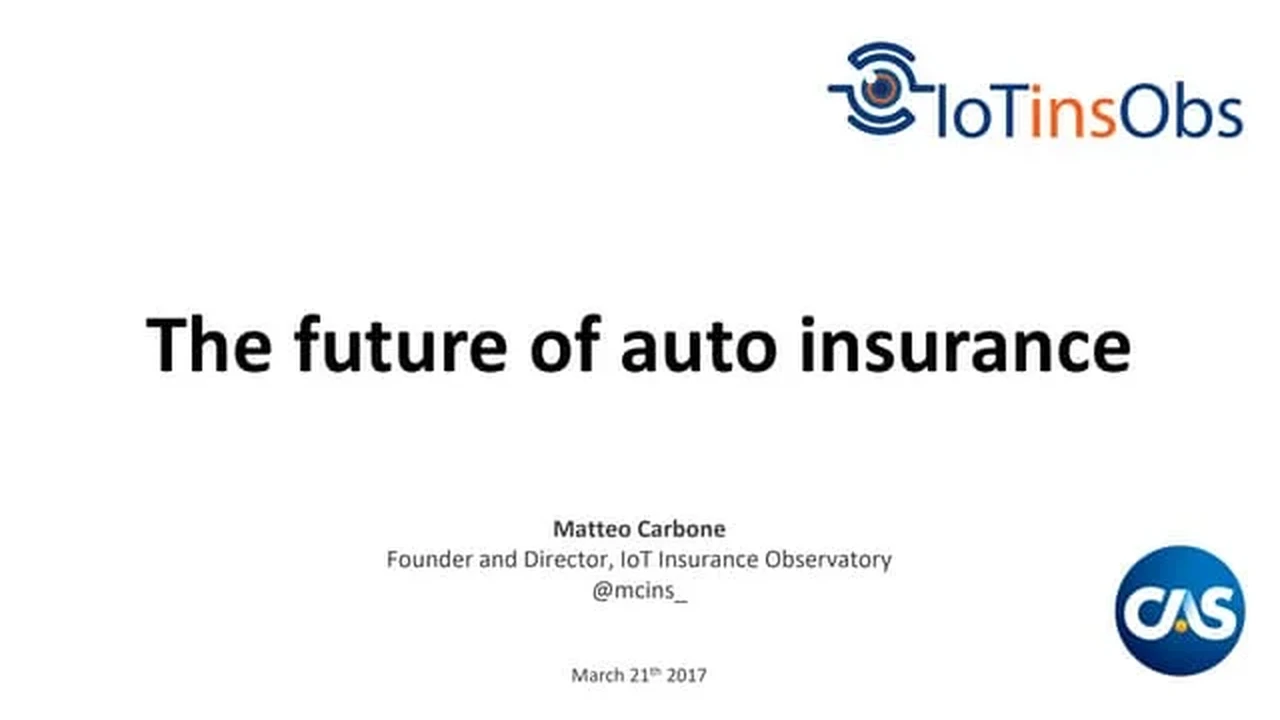5 Ways to Speed Up Your Auto Insurance Claim Process
Discover 5 ways to prepare for future auto insurance rate changes. Stay ahead of potential increases and maintain affordable coverage.

5 Ways to Prepare for Future Auto Insurance Rate Changes
Hey there, savvy driver! Let's talk about something that affects almost every car owner: auto insurance rates. They're not static, are they? They can go up, they can go down, and sometimes it feels like they just do whatever they want. But what if I told you there are proactive steps you can take to prepare for these shifts and keep your premiums as low as possible? It's all about being smart, staying informed, and making a few strategic moves. We're going to dive deep into five fantastic ways to get ready for those inevitable rate changes, ensuring you're always getting the best bang for your buck.
Understanding Auto Insurance Rate Fluctuations Why Do Rates Change
Before we jump into how to prepare, let's quickly chat about why auto insurance rates change in the first place. It's not just random! Insurers consider a ton of factors. Think about things like the overall claims frequency in your area, the cost of vehicle repairs (which keeps going up with all that fancy tech in cars), medical costs for injuries, and even economic inflation. Your personal circumstances play a huge role too: your driving record, where you live, the type of car you drive, and even your credit score in some regions. New technologies, like advanced driver-assistance systems (ADAS), can also influence rates, sometimes lowering them due to increased safety, but sometimes raising them due to more expensive repair costs. Understanding these underlying causes is your first step to being prepared.
Strategy 1 Regularly Review and Compare Auto Insurance Quotes
This might sound obvious, but it's probably the most powerful tool in your arsenal. Don't just stick with the same insurer year after year out of habit. Your loyalty might not be rewarded with the best rates. Insurers often offer their most competitive prices to new customers. So, make it a habit to shop around, ideally every 6 to 12 months, or whenever a significant life event occurs (like moving, getting married, or buying a new car).
How to Effectively Compare Auto Insurance Quotes
When you're comparing, don't just look at the bottom line. Make sure you're comparing apples to apples. This means ensuring the coverage limits, deductibles, and types of coverage (liability, collision, comprehensive, uninsured motorist, etc.) are identical across all quotes. Otherwise, a cheaper quote might just be offering less protection.
Recommended Online Comparison Tools and Platforms
There are some fantastic online platforms that make this process super easy. They can pull multiple quotes for you in minutes. Here are a few popular ones, keeping in mind their availability might vary slightly between the US and Southeast Asia:
- For the USA:
- Gabi: This platform is great because it connects to your current insurance account and finds comparable policies, often saving users a significant amount. It's known for its unbiased comparisons.
- The Zebra: Offers real-time quotes from over 100 providers. It's very user-friendly and provides a comprehensive overview of your options.
- NerdWallet / Bankrate: These financial comparison sites also have robust auto insurance comparison tools, offering educational content alongside quotes.
- For Southeast Asia (examples, as specific platforms vary by country):
- CompareHero (Malaysia): A popular comparison site for various financial products, including car insurance.
- MoneySmart (Singapore): Offers comparisons for car insurance, credit cards, and loans, making it a one-stop shop for financial planning.
- GoBear (various SEA countries): While GoBear has scaled back in some markets, it was a prominent comparison site across Southeast Asia. Always check for current local alternatives.
- Local Insurer Websites: In many SEA countries, direct comparison might be less centralized. It's often effective to visit the websites of major local insurers (e.g., AXA, FWD, Tokio Marine, MSIG, Etiqa, NTUC Income) and get quotes directly, then compare them manually.
Usage Scenario: Let's say you've been with 'Reliable Auto' for three years. Your premium just went up by 8% at renewal. You use Gabi (in the US) or MoneySmart (in Singapore) to get quotes. You find 'Budget Drive' offers the exact same coverage for 15% less. You can then either switch to Budget Drive or use that quote to negotiate with Reliable Auto. Sometimes, they'll match or beat a competitor's offer to keep your business!
Strategy 2 Optimize Your Driving Habits and Vehicle Safety Features
Your driving behavior is a huge factor in your insurance rates. The safer you drive, the less likely you are to file a claim, and insurers love that! This strategy involves both improving your actual driving and leveraging technology to prove it.
Leveraging Telematics and Usage Based Insurance UBI Programs
Many insurers now offer telematics programs, also known as Usage-Based Insurance (UBI). These programs use a device (plugged into your car's OBD-II port) or a smartphone app to monitor your driving habits: speed, braking, acceleration, mileage, and even the time of day you drive. Safe drivers can earn significant discounts, sometimes up to 30% or more.
Popular Telematics Programs and Devices
- Snapshot by Progressive (USA): A well-known program that uses a device or app. Drivers can see their driving data and potential savings.
- Drivewise by Allstate (USA): Similar to Snapshot, offering discounts for safe driving and even cashback for good habits.
- SmartRide by State Farm (USA): Another app-based program that rewards safe driving.
- AIG Telematics (Southeast Asia - e.g., Singapore, Malaysia): AIG offers telematics-based insurance in several SEA markets, providing discounts for safe driving.
- FWD Insurance (Southeast Asia - e.g., Thailand, Singapore): FWD often incorporates telematics into their offerings, especially for younger drivers or those looking for personalized premiums.
- MSIG Motor Insurance (Southeast Asia - e.g., Malaysia, Singapore): Some MSIG policies offer telematics options for premium adjustments.
Usage Scenario: You're a careful driver but your rates are high because you live in a busy city. You enroll in Progressive's Snapshot program. After a few months of consistently safe driving (no hard braking, no late-night speeding), you qualify for a 20% discount on your next renewal. This directly counteracts any general rate increases.
Enhancing Vehicle Safety with ADAS and Anti Theft Devices
Modern cars come with Advanced Driver-Assistance Systems (ADAS) like automatic emergency braking, lane-keeping assist, and adaptive cruise control. These features reduce the likelihood of accidents, and many insurers offer discounts for vehicles equipped with them. Similarly, installing anti-theft devices (alarms, immobilizers, GPS trackers) can also lead to lower comprehensive coverage premiums.
Examples of Safety Features and Their Impact
- Automatic Emergency Braking (AEB): Can reduce front-to-rear collisions by a significant margin. Many insurers offer 5-10% discounts.
- Lane Departure Warning/Lane Keeping Assist: Helps prevent unintentional lane changes, reducing side-swipe accidents.
- GPS Tracking Devices (e.g., LoJack, various car manufacturer apps): Not only helps recover stolen vehicles but can also qualify for anti-theft discounts.
Usage Scenario: You're buying a new car. You're torn between two models. One has a full suite of ADAS features, the other doesn't. You check with your insurer and find that the ADAS-equipped car qualifies for a 7% safety discount, making its overall cost of ownership (including insurance) more attractive. This foresight helps you prepare for future rate changes by starting with a lower base premium.
Strategy 3 Maintain a Clean Driving Record and Improve Your Credit Score
These two factors are massive influencers on your auto insurance rates, especially in the US. A clean driving record means fewer accidents and traffic violations, while a good credit score (where permitted by law) signals financial responsibility.
The Importance of a Spotless Driving History
Every ticket, every accident, every claim you file can potentially increase your premiums for years. Insurers look at your driving history to assess your risk. The fewer incidents you have, the lower your perceived risk, and thus, the lower your rates. This is a long-term strategy that pays off consistently.
Tips for Avoiding Accidents and Violations
- Defensive Driving: Always be aware of your surroundings, anticipate other drivers' actions, and maintain a safe following distance.
- Avoid Distractions: Put away your phone! Distracted driving is a leading cause of accidents.
- Obey Traffic Laws: Speed limits, stop signs, and traffic signals are there for a reason.
- Consider a Defensive Driving Course: Some insurers offer discounts for completing an approved defensive driving course, and it can refresh your skills.
Usage Scenario: You received a minor speeding ticket last year, and your premium went up. You commit to more defensive driving, and after three years, the ticket falls off your record. Your insurer then re-evaluates your risk, and your rates drop significantly, preparing you for future increases by having a strong foundation.
Impact of Credit Score on Auto Insurance Rates USA Specific
In many US states, insurers use a credit-based insurance score as a factor in determining premiums. This score is different from your regular credit score but is derived from your credit report. A higher score generally leads to lower premiums, as statistically, individuals with better credit scores tend to file fewer claims.
How to Improve Your Credit Score for Better Rates
- Pay Bills on Time: Payment history is the biggest factor in your credit score.
- Reduce Debt: Lowering your credit utilization (the amount of credit you're using compared to your total available credit) can boost your score.
- Check Your Credit Report: Dispute any errors that could be dragging your score down.
- Don't Open Too Many New Credit Accounts: This can signal risk to lenders and insurers.
Usage Scenario: You've been working on improving your credit score over the past year. When your auto insurance renewal comes up, you notice your premium increase is less than expected, or even a slight decrease, because your improved credit score has positively impacted your insurance risk assessment. This is a subtle but powerful way to prepare for and mitigate rate changes.
Strategy 4 Adjust Your Coverage and Deductibles Strategically
Your insurance policy isn't set in stone. As your life changes, so should your coverage. Regularly reviewing and adjusting your coverage and deductibles can be a smart way to manage future rate changes.
Reassessing Coverage Needs as Your Vehicle Ages
Do you really need full comprehensive and collision coverage on a 15-year-old car that's only worth a couple of thousand dollars? Probably not. As your car depreciates, the cost of full coverage might outweigh the potential payout. Consider dropping collision and comprehensive on older, less valuable vehicles to save on premiums. Just make sure you're not violating any loan or lease agreements if you still have them.
Choosing the Right Deductible for Your Financial Situation
Your deductible is the amount you pay out of pocket before your insurance kicks in. A higher deductible generally means a lower premium. If you have a healthy emergency fund, increasing your deductible from, say, $500 to $1,000 or even $2,500 can significantly reduce your monthly or annual payments. Just be sure you can comfortably afford that deductible if you do need to file a claim.
Comparing Deductible Options and Their Premium Impact
Let's look at some hypothetical examples:
- Scenario 1: Low Deductible ($250)
- Premium: $150/month
- Out-of-pocket for claim: $250
- Best for: Those who prefer minimal upfront costs in an accident, even if it means higher monthly payments.
- Scenario 2: Medium Deductible ($500)
- Premium: $120/month
- Out-of-pocket for claim: $500
- Best for: A good balance for many drivers, offering decent savings without an excessively high out-of-pocket cost.
- Scenario 3: High Deductible ($1,000)
- Premium: $90/month
- Out-of-pocket for claim: $1,000
- Best for: Drivers with a solid emergency fund and a low likelihood of filing claims, willing to take on more risk for lower premiums.
Usage Scenario: Your car is now 8 years old, and you've paid off the loan. You realize its market value is only about $6,000. You decide to increase your collision and comprehensive deductibles from $500 to $1,000, saving you $25 a month. You also consider dropping comprehensive altogether if the premium savings are substantial and you're comfortable self-insuring for minor damages. This adjustment directly prepares you for future rate increases by lowering your current baseline.
Strategy 5 Maximize All Available Discounts and Bundling Options
Discounts are like hidden treasures in the world of auto insurance. Many people don't realize how many they qualify for. And bundling? That's often one of the biggest money-savers out there.
Uncovering Lesser Known Auto Insurance Discounts
Beyond the common ones (good driver, multi-car), there are many others:
- Good Student Discount: For young drivers with good grades.
- Occupational Discounts: For certain professions (teachers, military, first responders, engineers).
- Low Mileage Discount: If you don't drive much.
- Payment Method Discounts: For paying in full, setting up automatic payments, or going paperless.
- New Car Discount: For vehicles less than 3 years old.
- Anti-Theft Device Discount: As mentioned earlier.
- Homeowner Discount: Even if you don't bundle, some insurers offer a discount just for owning a home.
- Early Shopper Discount: For getting a quote a certain number of days before your policy renews.
Always ask your insurer for a full list of discounts they offer. You might be surprised!
The Power of Bundling Home and Auto Insurance
Bundling your auto insurance with other policies, like homeowners, renters, or even life insurance, is one of the most effective ways to save. Insurers love customers who bring them more business, and they reward that loyalty with significant multi-policy discounts, often ranging from 10% to 25% on your total premium.
Comparing Bundling Options Across Providers
When considering bundling, it's crucial to compare the total cost of the bundled policies from different providers. Don't just assume your current auto insurer offers the best home insurance, or vice versa. Get quotes for both policies bundled together from several companies.
- Major US Bundling Providers:
- State Farm: Known for strong agent networks and competitive bundling.
- Allstate: Offers various bundling options and discounts.
- GEICO: While primarily known for auto, they partner with other insurers for home policies, offering a bundling discount.
- Progressive: Strong bundling options, especially with their own home insurance products.
- Major Southeast Asia Bundling Providers (examples):
- AXA (various SEA countries): Offers comprehensive insurance solutions, including home and auto.
- FWD Insurance (various SEA countries): Often has attractive packages for multiple policies.
- Tokio Marine (various SEA countries): A global player with strong local presence and bundling potential.
- Etiqa (Malaysia, Singapore): Known for digital-first approaches and competitive multi-policy offerings.
Usage Scenario: You currently have separate auto insurance with 'Speedy Coverage' and home insurance with 'Safe Home.' You decide to get a bundled quote from State Farm. They offer you a combined premium that's 18% lower than what you're currently paying for both policies separately. By making this switch, you've effectively prepared for future rate changes by locking in a lower overall cost and maximizing your discounts.
So there you have it! Five solid strategies to help you stay ahead of those pesky auto insurance rate changes. It's all about being proactive, doing your homework, and not being afraid to switch things up when it makes financial sense. Keep these tips in mind, and you'll be well on your way to maintaining affordable and comprehensive auto insurance coverage, no matter what the future holds for rates.
:max_bytes(150000):strip_icc()/277019-baked-pork-chops-with-cream-of-mushroom-soup-DDMFS-beauty-4x3-BG-7505-5762b731cf30447d9cbbbbbf387beafa.jpg)






